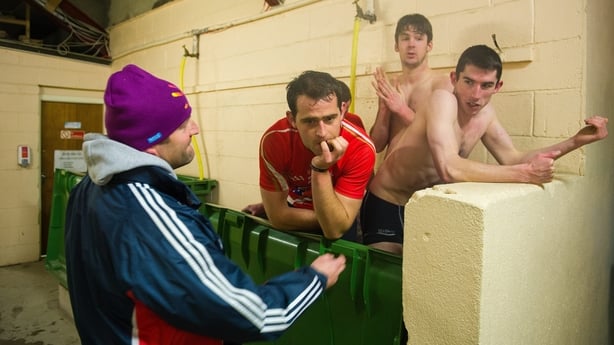One of the most misunderstood principles of fitness training is the recovery process. This is especially true in Gaelic games.
The progress and development of fitness, strength, speed, agility and all the other physical qualities that improve GAA players takes place while they are resting. If the rest and recovery period is too short, the improvement in fitness and strength doesn't take place.
A hurler, camogie or football player can have the best training programme out there, but their hard work could be wasted and completely futile if their recovery is not adequate.
It is nonsensical to think that after doing the 'hard work' of training, the gains made could be so easily lost through insufficient recovery.
The relationship between recovery and fatigue and its impact on performance is huge. All GAA players require adequate balance between stress (training and playing matches) and recovery, this is essential for all players to achieve continuous high-level performance.
There are six main recovery strategies used in GAA to ensure correct recovery from tough pitch and gym sessions takes place.
The easiest, cheapest, and most effective recovery strategy is sleep. Numerous studies have identified that high-performing athletes require an average of eight hours quality sleep a night.
Even more interesting was a recent study that found athletes who slept less than eight hours a night has a 1.7 times greater risk of being injured than those who achieved the magic number of 8+ hours per night.
The second most effective recovery tool is food and water. Diet and nutrition play a key role in post-exercise recovery and repair of any muscle damage that takes place during training and games.
The real secret is to eat clean, quality food most of the time and drinking water is the best fluid any GAA athlete can consume.
Heat therapy has been shown to improve the recovery process as this increases blood flow to the muscles in a passive manner, this increase in blood flow helps remove any damaging waste products that build up during training and competition.
Some very simple heat therapies used include Include sauna, hot baths, spa, hot shower, jacuzzis and heat pads.

In direct contrast another way to recover is to use cold therapy, this includes ice baths, cold showers, ice packs. Cold therapy works by reducing body core temperature and blood flow.
Ice baths became very popular in all sporting organizations over the last decade but are grossly misused. There is an attitude within the GAA that the colder the ice bath and the longer the athlete was exposed to the bath the better the benefit. This has scientifically been proven to be incorrect and strength and speed development will be compromised due to reduced blood flow.
Another cheap and simple recover method is active recovery and light exercise using any mode that is appropriate – walking, slow jogging, cycling, swimming, players sometimes go for a round of golf the day after a game, which is another method of active recovery.
A proper planned cool-down after training and matches is vital in ensuring good recovery, the cool down process is associated with decreasing core temperature (which increases during activity) and reducing the neural and physiological fatigue state of the body after training or sport.
The sixth and final method of recovery that is currently used is compression garments (tight shorts, socks, leggings, base layers) which work by compressing the under-lying muscles and squeezing blood out of the muscles.
Therefore, this extra blood flow helps to remove metabolic waste products from muscles. Compression pants and socks are often worn by athletes who have long airline travel to stop swollen ankles and lower legs.
All methods of recovery used with GAA circles have been shown to be effective in improving recovery in athletes, depending upon the person and situation. To limit the cost of amateur athletes improving recovery from training or competition the following recommendations will help in doing it as inexpensively as possible.
- Eat and hydrate ASAP after training and competition.
- Active warm-down ASAP. Restore normal body function by mild exercise (e.g. cycling, walking, pool, stretching).
- Heat therapy or contrast hot and cold showers or ice baths, choose which is appropriate to the players and the situation.
- Use compression garments where appropriate.
- 8+ hours of quality sleep.
- Next day – self massage or use massage tools/modalities (roll on soft balls, foam rollers, etc.) and/or light physical activity to loosen up stiff muscles and boost blood circulation.
Recovery is multifaceted, and both the choice of recovery strategy and the ways in which recovery strategies are combined within GAA teams involve many considerations.
The ability to train is governed by the ability to recover, so less is often more.

